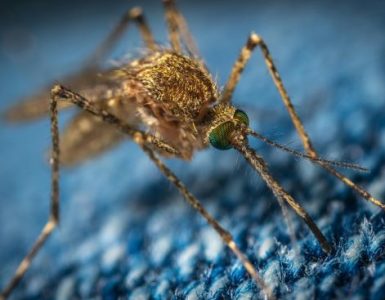One of the first moves a general makes before a battle is to scout the terrain. Without understanding the battlefield, tactics, strategy, and supply lines mean little. Similarly, when doctors, researchers, and epidemiologists face off against a virus, their understanding of the virus’s physical structure is crucial. This molecular terrain dictates how a virus invades bodies, spreads, and how best to counter it with vaccines and treatments.
This precise structural knowledge is the expertise of molecular virologist Richard Kuhn, the Trent and Judith Anderson Distinguished Professor of Science at Purdue University and the Krenicki Family Director of the Purdue Institute of Inflammation, Immunology, and Infectious Disease. Kuhn, in collaboration with viral expert Michael Diamond of Washington University School of Medicine, is at the forefront of the fight against viral pandemics through the new Research and Development of Vaccines and Monoclonal Antibodies for Pandemic Preparedness (ReVAMPP) network, funded by the National Institute of Allergy and Infectious Diseases (NIAID).
Kuhn’s mission is to deeply understand how viruses interact with antibodies to guide the development of effective vaccines and treatments. This involves scrutinizing the virus at its most fundamental level, determining how it infiltrates cells, and neutralizing it before it can wreak havoc on a population.
Viral threats – small but dangerous
Viruses are incredibly small, often just a bundle of DNA or RNA within a tiny core, sometimes shielded by a membrane. They can’t reproduce on their own—they need a host, whether it’s a plant, animal, or fungus. Kuhn’s research in Purdue’s Department of Biological Sciences focuses on RNA viruses, particularly those transmitted by mosquitoes and ticks. These include dangerous viruses like Zika, dengue, West Nile, and chikungunya. His work aims to understand their structure and how they interface with host cells, therefore is an essential step toward designing vaccines.
“With the experience during the pandemic, there is more focus on viruses globally,” Kuhn notes. “Since the 1970s, we’ve seen a steady stream of known and emerging viruses, from HIV to Ebola, and influenza comes back every year with significant impact.”
As climate change and globalization accelerate, viruses have more chances to mutate and cross into human populations. The tick- and mosquito-borne diseases Kuhn studies are emerging as particularly serious threats.
Building the arsenal by collaborating for future preparedness
Kuhn co-leads the Flavivirus and Alphavirus ReVAMPP (FLARE) grant, a collaborative effort aimed at understanding flaviviruses and alphaviruses to prepare for potential pandemics. Instead of developing specific vaccines for each virus, the team is designing platforms that will allow rapid response when the next viral threat emerges.
FLARE brings together researchers from 16 academic institutions, industry partners, and focuses on five key viruses: West Nile, tick-borne encephalitis, dengue, chikungunya, and Venezuelan equine encephalitis. Multiple teams are attacking the problem from various angles—working on traditional vaccines, mRNA vaccines, nanoparticle-based vaccines, and antibody treatments.
Kuhn emphasizes the importance of teamwork in modern science. “It’s an amazing network of hundreds of people working in a coordinated way. All the leaders in the field are involved in this grant,” he says.
The tools of the future: AI and Advanced Imaging
As well as co-leading the FLARE grant, Kuhn heads one of its primary focuses: structural biology. His team’s goal is to map the antibodies and viruses at an atomic level, using advanced tools like AI and high-resolution microscopes. These allow researchers to rapidly identify vulnerabilities in a virus’s structure.
Kuhn uses the example of dengue, which infects up to 400 million people annually. “There are certain features on the virus surface that antibodies like to recognize to prevent infection,” Kuhn explains. By understanding these structures, even for unknown viruses in the same group, scientists can design antibodies to target those areas, reducing the time needed to respond to an outbreak.
New technology, akin to the resolution of space telescopes that peer deep into the universe, now allows virologists to see viruses more clearly. The clarity provided by these tools lets researchers move away from guesswork and rapidly identify potential treatments.
Kuhn’s team is leveraging AI to predict how viruses interact with human immune systems and how best to trigger an effective response. The hope is that these cutting-edge tools will not only speed up the process of developing vaccines but will make those vaccines more effective.
With global collaboration, advanced tools, and a network of top experts, Richard Kuhn and his team are preparing for future viral threats. Through the FLARE grant and related efforts, they aim to ensure that when the next pandemic strikes, humanity can respond quickly and effectively. Like a general scouting the battlefield, Kuhn is mapping the virus’s structure to give us an advantage in the fight against pandemics. (Source: Purdue University)
By Daniela La Marca, Global Health Press (GHP)

















